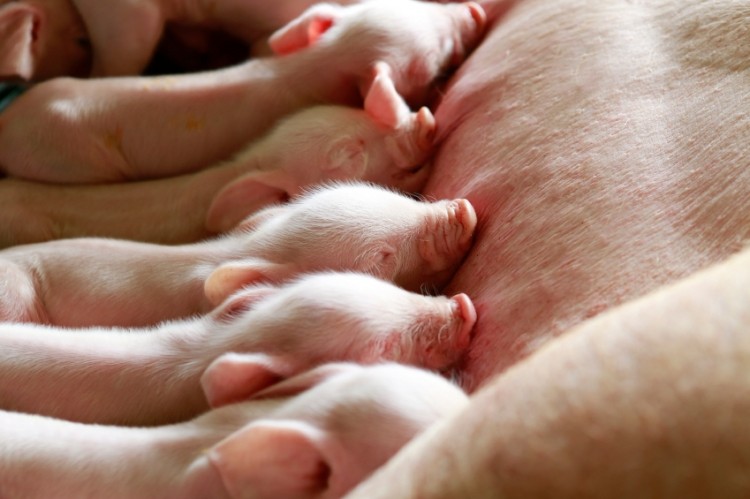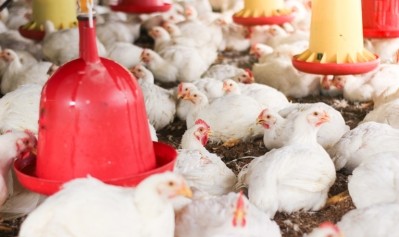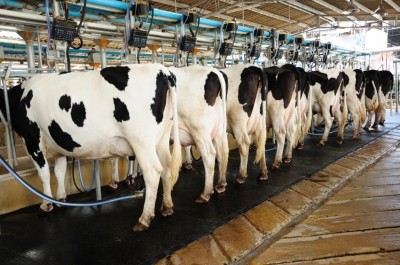EW Nutrition links formulation and on farm insights to tackle dysbiosis challenges

We spoke to Dr Heinrich Kleine Klausing, managing director and head of product management and production, EW Nutrition, to hear about the ‘pig whisperer’ methodology it is championing as part of its strategy to ensure its formulation approach matches livestock producers’ needs.
Dutch pig expert, Kees Scheepens, has been leading the charge in terms of interpretation of swine signals. He recently initiated EW Nutrition’s product management and sales teams in such an approach.
The training, said Klausing, included an overview of production on a sow farm relying on various tools and techniques to enable on farm practical analysis:
“The barn was divided up between the team to allow for close inspection of the animals. The farm had been experiencing significant piglet diarrhea challenges and less gain, consequently, in suckling piglets. What we determined was that the sows were lying on their belly to protect their udder from the cold as the flow rate of the air in the barn was much too high. The piglets were not receiving colostrum quickly enough as a result. The environmental factors needed adjusting.
“Given those particular circumstances, but not as a general recommendation, the farmer needs to dose a ready to use lipid product based on immunoglobulins directly into the mouth of the piglet.
“Evidently, we can’t do such deep analysis on every farm but such learnings help us think about the whole picture in terms of swine production, how husbandry and management practices can affect productivity and we can innovate on that basis. We can develop our products further based on scientific trials, but also through consultation and feedback from the market,” said Klausing.
He said other indicators that a piglet is not getting enough milk can be drawn from its body condition, the fullness of the belly, if it is standing in an unusual way, and, of course, the more obvious ones such as diarrhea incidence and weight gain status at weaning.
Antibiotic and zinc oxide reduction
Klausing said the plant extracts producer is also further developing its microencapsulated secondary plant compound line, Activo, as an alternative to antimicrobials used to address dysbiosis challenges in poultry and pigs.
He sees growth opportunities for that range from the growing pressure to reduce the use of antibiotics in livestock and zinc oxide (ZnO) in European pig production, in particular. Concerns related to ZnO usage are its potential for environmental contamination, its accumulation in soil and its potential run off into water.
EW Nutrition is also collaborating with the German poultry industry association, ZDG, and the Boehringer Ingelheim group in research on antibiotic alternatives such as plant extracts under a project initiated by the Federal German Ministry of Nutrition and Agriculture (BMEL) this year.
The aim of the three-year long EsRAM project is to reduce antimicrobial resistant (AMR) pathogens in broilers. It will look at how feed additives can contribute to this goal. It is supported by the BMEL to the tune of €2.46m on the basis of a resolution by the German parliament.
International poultry forum trial report
Klausing said a study by US researchers, based at Auburn University, on the impact of its SPC based Activo line on broiler performance was presented at the international poultry scientific forum at IPPE in Atlanta at the end of January this year.
That team, he said, found that the SPC based additive improved gain, FCR adjusted for mortality and footpad health in broilers during hot weather.
The trial, said the Auburn University team, was focused on male broilers, and involved 35 birds per pen and 11 pens per treatment. The birds were raised to 49 days on used litter in hot weather conditions to test the influence of SPC on broiler live performance, footpad quality and meat yield.
The treatments included a negative control (NC); a positive control (PC) including BMD (starter and grower) and virginiamycin (finisher and withdrawal); negative control plus SPC at 130 grams/ton of feed; and positive control plus SPC.
A four-phase feeding program was used with 0.68 kg starter, 2.27kg grower, 2.70 kg finisher and withdrawal to 49 days. At 49 days, 10 birds/ pen were processed for yield determination. After processing, carcasses were chilled in slush ice for 3 to 4 hours before chilled carcass weights were determined, said the authors.
They said meat yield determination was completed after deboning by professional deboners.
Results
Body weight gains (BWG) from 35 to 48 days were significantly higher for both SPC treatments (1.152 vs 1.053 kg), wrote the authors. Birds fed PC with or without SPC weighed less at 35 and 48 days contrary to expectations, they added.
They noted a similar result in BWG from 14 to 35 days. Feed consumption (FC) was affected by treatment only for the PC from 14 to 35 days. FC was non-significantly increased in treatment fed SPC from 35 to 48 days.
The researchers found feed efficiency (FCR) was improved in treatments fed SPC. “These differences showed more clarity when FCR was adjusted for mortality weight (AFCR) from 35-48 (2.062 vs 2.170) and 0-48 d (1.644 vs 1.672).
They also saw that birds fed SPC showed a lower percentage of birds with footpad lesions (25 vs 39%). “Mild lesions were likewise lower in the SPC treatment without antibiotics,” they added.
Mortality did not differ by treatment with the exception of an increase in PC-fed birds between 14 and 35 days. The team said breast fillet, tender, wing and leg yields were not influenced by any of the dietary treatments in the trial.
Source: ABSTRACTS, 2016 International Poultry Scientific Forum, Georgia World Congress Center, Atlanta, Georgia, January 2016
Title: Broiler performance and footpad health in broilers fed an additive composed of secondary plant compounds (SPC)
Authors: W Pacheco, W Berry, J Hess

















